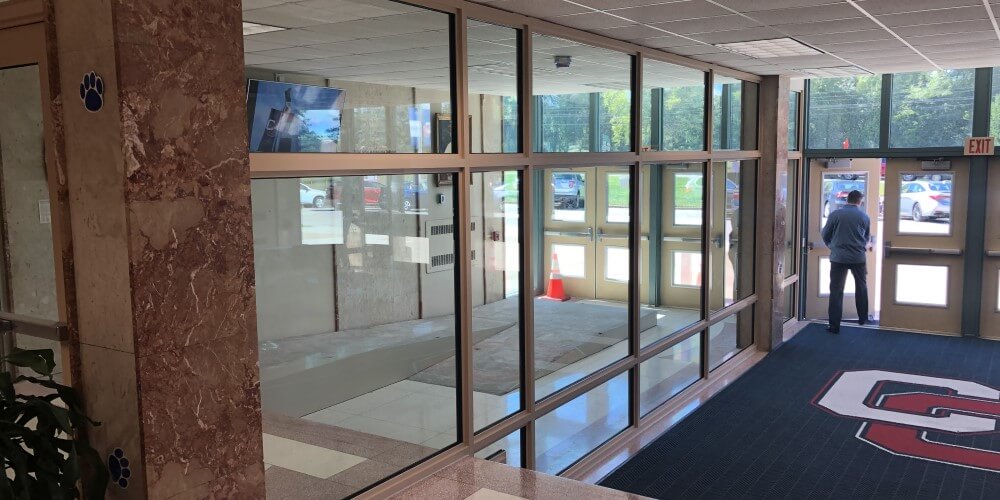Several factors contribute to a window's light transmission—both in the case of standard commercial/residential glass and with bulletproof glass clarity. These factors include the combination of glazing materials used in a laminated window, the composition of each glazing layer, the addition of tints and other coatings, and the thickness of the glazing itself. (The air gap in insulated windows tends not to noticeably affect light transmission.)
There are several ways of talking about how clear a particular glazing is. The two most common are visible transmittance (VT) and visible light transmission (VLT). As a rule, a higher number means more visible light is passing through the window.
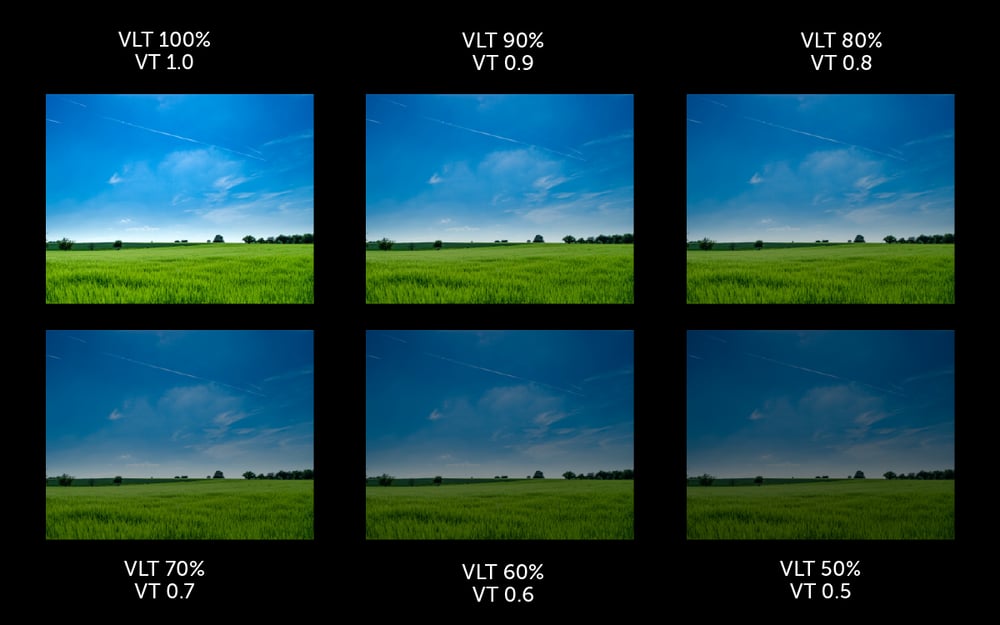
Visible Transmittance (VT) and Visible Light Transmission (VLT)
Visible Transmittance (VT) is a measure of the fraction of visible light that passes through a material. It’s expressed as a number between 0 and 1. A "0" means no visible light makes its way through (think “brick wall”). A "1" means that all visible light is perfectly transmitted (i.e., if there was no window at all, just a hole in the wall). A good double-paned all-weather residential window has a VT around .75.
Visible Light Transmission (VLT) is the same basic measure, but expressed as a percentage. A brick wall has 0% VLT, an open window 100% VLT, and a home's insulated windows around 75% VLT.
The percentage-based VLT is more intuitive to most people and thus somewhat more common. One exception is on government projects and projects involving LEED certification, where VT is more likely to be used.
In general, most non-ballistically rated commercial exterior windows range from a VLT of around 40% (VT 0.4) to 80% (VT 0.8). The low end of that scale would be something like mirror-tinted office windows. The high end would be clear glass residential windows.
Bulletproof Glass Clarity
Ballistically rated glazing has a somewhat wider VLT range than standard glass. This is due to the fact that a wider range of materials are used to make ballistic windows and that glazing comes in a much wider range of thicknesses.
With standard non-ballistic windows, most commercial buildings use either 1/4" thick glazing or, in the case of insulated windows, two 1/4" panes with a 1/2" air gap, for a total thickness of 1". By contrast, ballistic glazing ranges from 3/4" thick to over 3" thick in the case of high-level insulated exterior bulletproof windows). One might assume this would mean bulletproof glass clarity is usually lower than that of standard glass. That's not the case. For example, while standard window glass has VLT around 85% for a 1/4" thick clear pane, ballistic acrylic 1" and thicker can still have a VLT over 90%.
The net result is that most common exterior bulletproof windows will transmit light about as well as clear exterior windows (if not better), despite being much thicker.
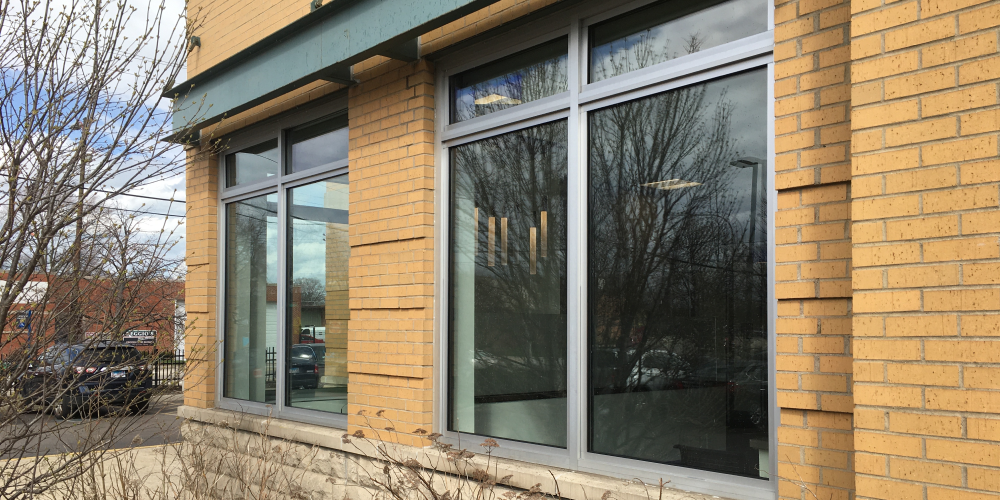
The biggest variance in bulletproof glass clarity is seen with glass-clad polycarbonate (GCP) and insulated ballistic windows (which are often made primarily using GCP). This is because GCP, as a laminated product, has a wide variety of make-ups (combining layers of polycarbonate, glass, and PVB Interlayers) and because it is available in the widest range of thicknesses (up to 3" thick).
Bulletproof Glass Clarity and Light Transmission (VLT)
- Acrylic (UL Level 1 and 2): +90%
- Laminated Polycarbonate (UL Level 1–3): 77% to +82%
- GCP (UL Level 1–8): 57% to 84%
- Insulated Ballistic Glass (UL Level 1–5): roughly 60 to 75%
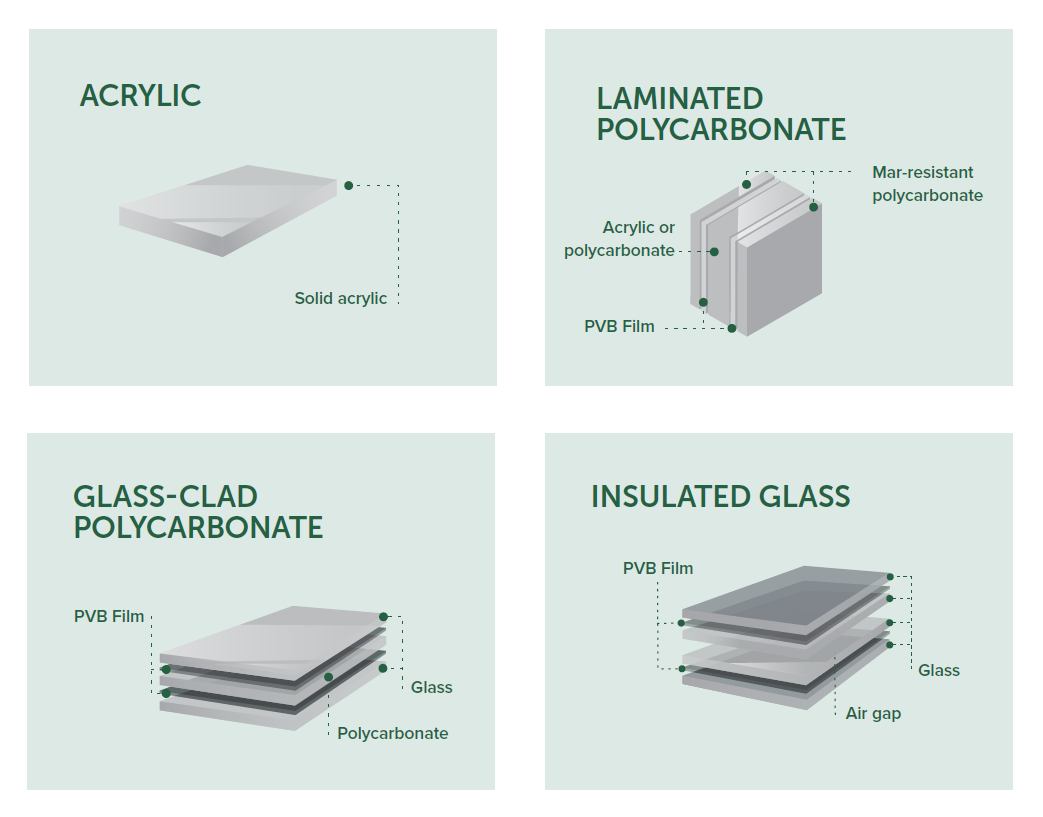
Special Considerations with Ballistic Glazing
A unique aspect of glazing in security applications—and important when dealing with bulletproof glass clarity—is the fact that there are so many more interior applications of ballistic glazing. These create very different considerations for bulletproof glass clarity.
As TSS engineering manager Jeremy Grunn explains, "Most of the time clients are trying to bring light transmission down to around 40% with exterior windows. A lot of times with insulated glass people are going to want a Low-E coating or some kind of tint, to get better environmental/LEED factors."
Meanwhile, clarity can be at a premium in interior applications. In those cases, acrylic and polycarbonate are the best choices, both because they offer the most design flexibility and the best light transmission.
“Acrylic is as clear as you’re going to get," Jeremy points out. "But you can achieve better light transmission with GCP or insulated glass, better than 75% VLT" if you need both high security and high light transmission.
"You can do a low-iron glass, for example," Jeremy explains. "This is a special glazing makeup that takes the iron out of the glass, which is what gives glass its green tint. You can also use soda glass. There are several approaches to bump up that light transmission with a glass-based ballistic transparency.”
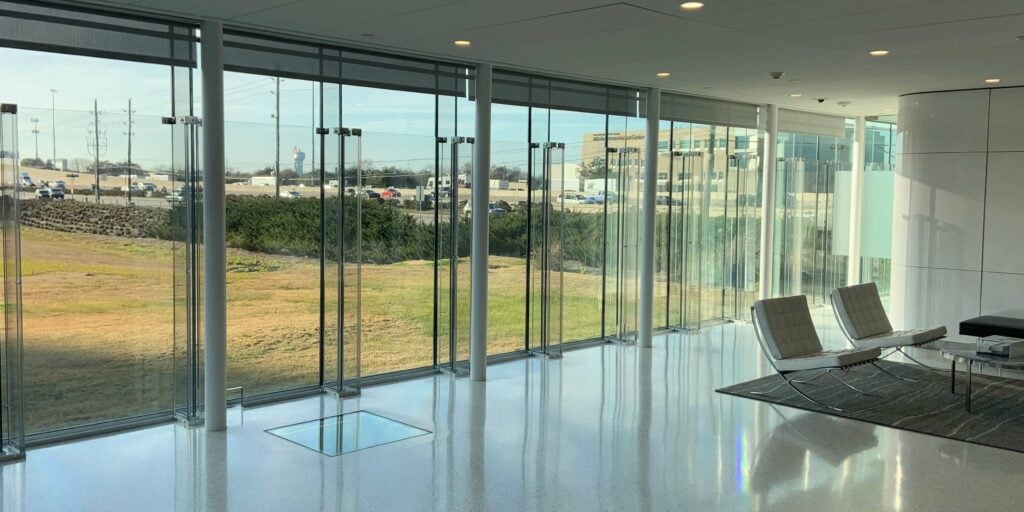
That said, interior ballistic glazing also has many options for reducing bulletproof glass clarity, if that's what a building needs. This is often helpful with sidelites and office windows, or in conference rooms. Tints, mirroring, and even spandrel treatments that bring VLT down near 0% are all available for interior ballistic glass.
TSS's Free Ultimate Guide to Bulletproof Systems can quickly bring you up to speed on the fundamentals of specifying bulletproof glass for an upcoming project. Have something specific in mind, or need assistance with a project now? Contact TSS's ballistic security experts today.
